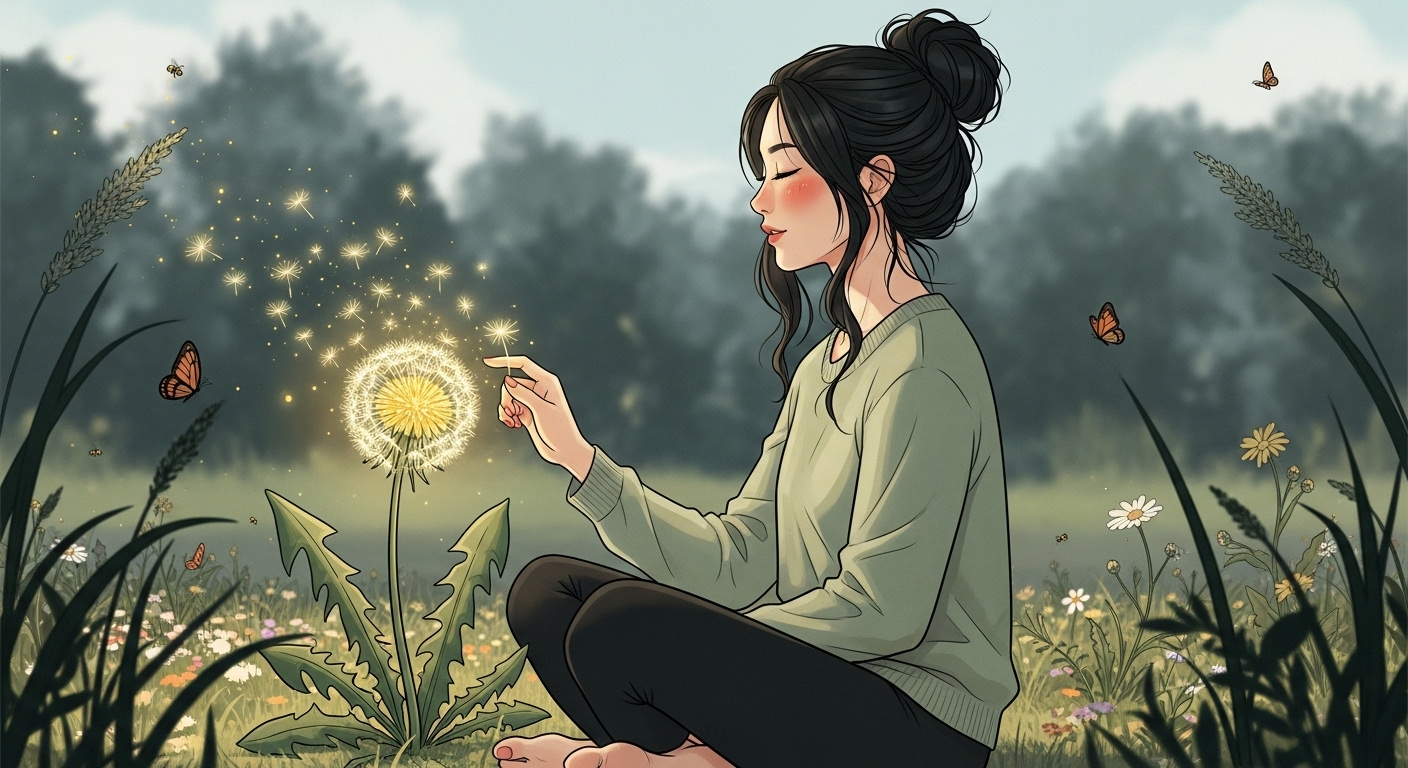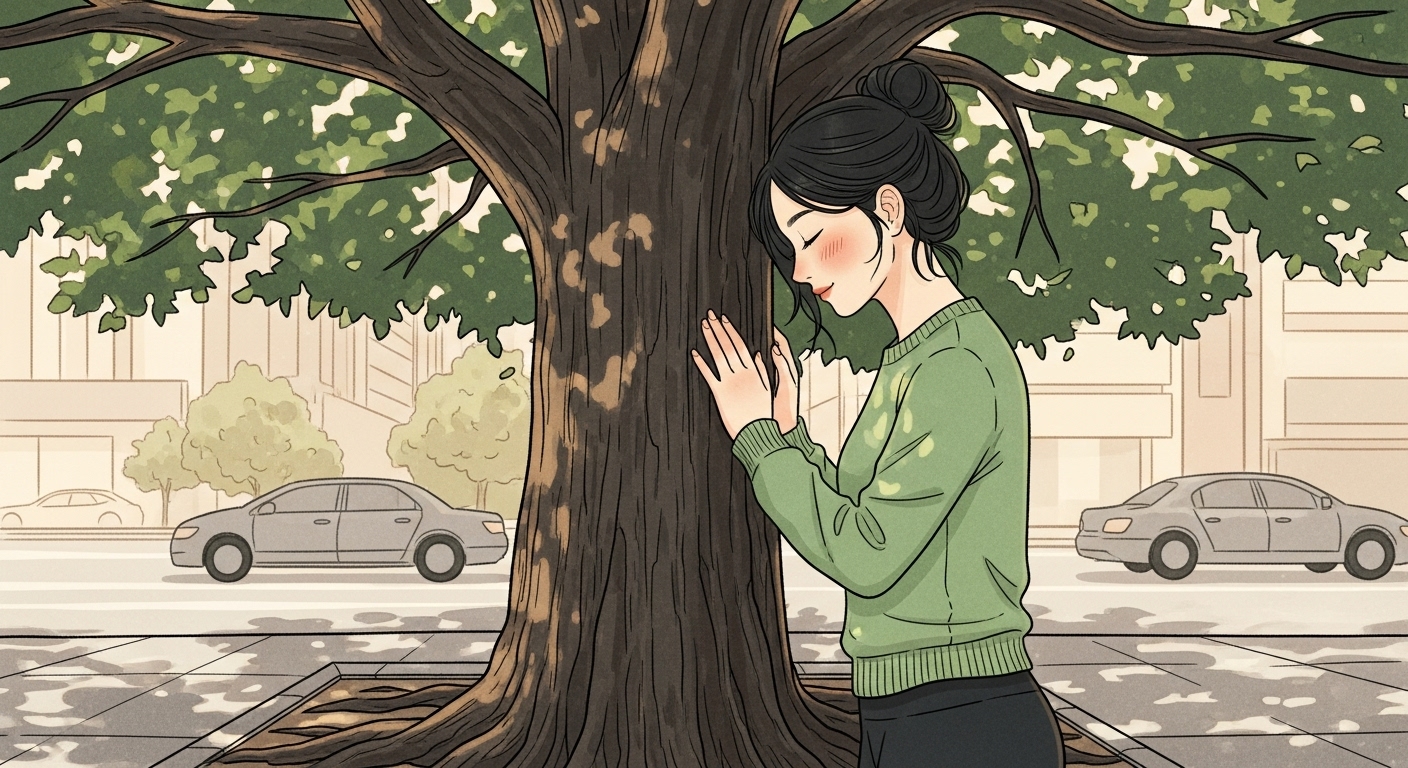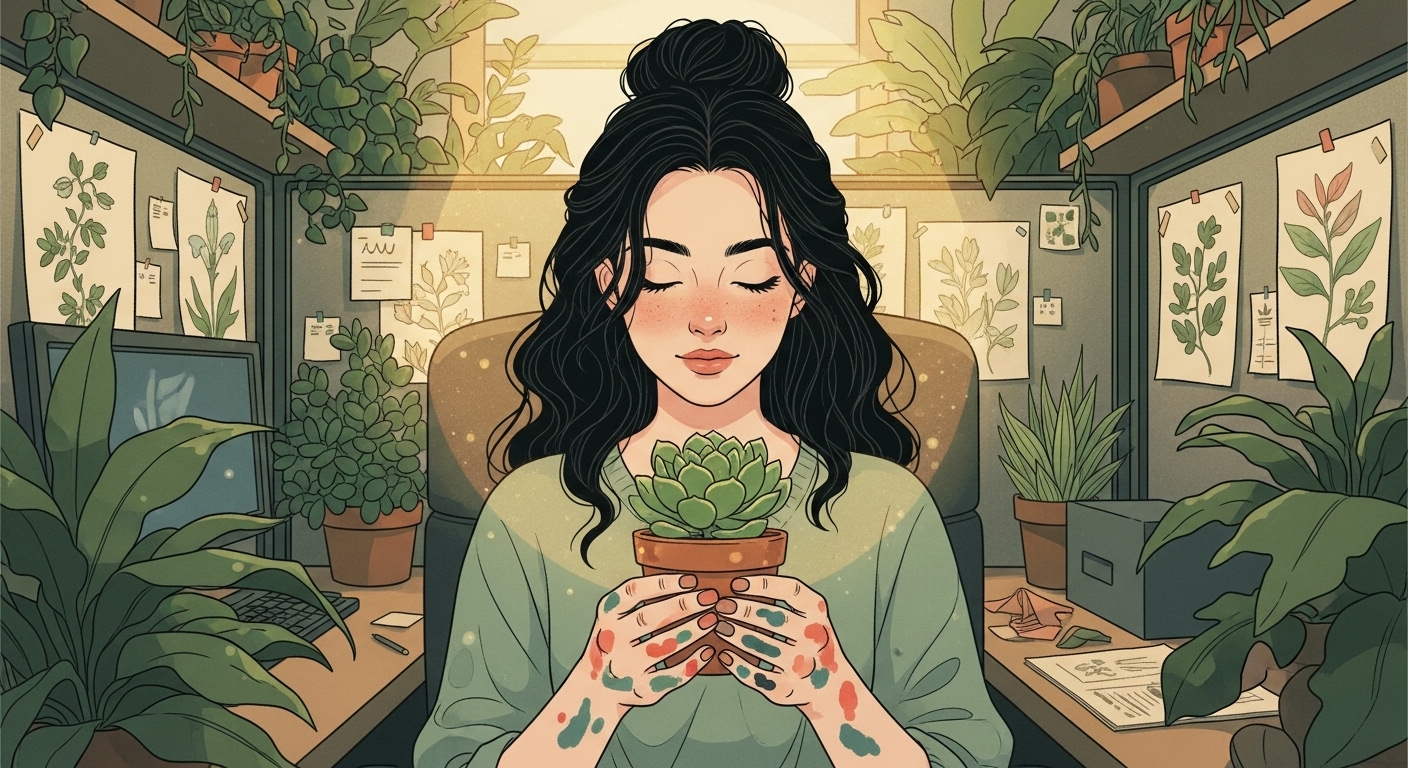Your Urban Ecosystem: How Personal Resilience Creates Collective Blooming
Like urban plants that create micro-ecosystems in concrete jungles, your resilience doesn't just help you—it creates possibilities for everyone around you.

Here’s what nobody tells you about that dandelion in the parking lot: it wasn’t just growing for itself.
Last week, I went back to visit my teacher—that bright yellow bloom pushing through asphalt. But this time, I looked closer. Really looked. And I discovered an entire world I’d missed.
The Secret Life of a Sidewalk Crack
Around that single dandelion, life was exploding. Tiny insects sheltered in its leaves. Bees visited throughout the day, carrying pollen to who knows where. Its roots had created tiny channels where moisture collected, allowing moss to establish nearby. Even its seeds, when they flew, weren’t just reproducing—they were pioneering new territories of possibility.
That one “weed” had created an ecosystem.
And suddenly, I understood something profound about resilience. It’s never just personal. When you bloom despite difficult conditions, you don’t just transform your own life. You create possibilities for life around you.
The Ripple Effect of Resilient Living
Think about urban nature for a moment. That ailanthus tree growing in the abandoned lot doesn’t just survive for itself. It:
- Provides shade that cools the concrete
- Creates oxygen for the neighborhood
- Offers shelter for birds
- Drops leaves that become soil for other plants
- Shows every passing person that life is possible here
Your resilience works the same way.
When you practice Resilience Breathing on a crowded subway, you’re not just calming yourself. You’re adding peace to the shared air. When you find creative solutions to obstacles (crack-finding in action), you’re showing others that barriers aren’t absolute. When you bloom in your difficult circumstances, you give others permission to bloom in theirs.
The Urban Wildflower Effect
I’ve started calling this the Urban Wildflower Effect. Here’s how it works:
Stage 1: The Pioneer You, like that first dandelion, decide to grow despite conditions. You start your practices. You find your cracks. You bloom where you’re planted.
Stage 2: The Micro-Climate Your resilience creates a slightly different environment around you. People notice something’s different. You’re calmer in crisis. You find opportunities where others see walls. You’re growing in what looks like solid concrete.
Stage 3: The Ecosystem Emerges Others start growing too. Not because you told them to, but because you showed them it was possible. Your crack-finding abilities help them see their own openings. Your resilience breathing reminds them they can transform any energy. Your blooming gives them courage to bloom.
Stage 4: The Meadow What started as one flower in concrete becomes a whole wildflower meadow. Each person who learns to bloom teaches others. The concrete is still there, but now it’s laced with color, life, possibility.
Real Stories from the Urban Ecosystem
Let me share what I’ve witnessed since starting these practices:
My neighbor Sarah, who used to complain endlessly about our building’s broken elevator, saw me doing Resilience Breathing on the stairs one day. Now she calls them her “vertical meditation moments” and arrives at work energized instead of exhausted.
My coworker Jim watched me practice Crack-Finding when our project hit a wall. Without saying anything, I spent five minutes feeling for openings instead of panicking. Found one. The next week, when he faced his own obstacle, I saw him close his eyes, breathe, soften his focus. He found his crack too.
My sister started visiting that dandelion with me. Then she noticed the wildflowers by the bus stop. Then the moss on her fire escape. Now she sends me photos of urban nature from all over the city. “Look,” she says, “teachers everywhere!”
Creating Your Own Urban Ecosystem
Here’s how to cultivate resilience that spreads:
Be Visible (Like Bright Petals) Don’t hide your practices. When you do Resilience Breathing, do it where others might notice. Not performatively, just naturally. Like a flower doesn’t hide its bloom.
Share Your Cracks When you find an opening in a barrier, mention it casually. “I was stuck on this, but then I noticed…” You’re teaching crack-finding without teaching.
Celebrate Other Blooms When you see someone else growing despite conditions, acknowledge it. “I noticed how you handled that difficulty. Like a plant through concrete.” Recognition helps resilience spread.
Create Micro-Climates Your desk can be an oasis. Your commute can be a moving meditation space. Your difficult meeting can be a practice ground. Others will feel the difference, even if they don’t understand why.
The Future Is Already Growing
Marcus sees subways as monasteries. Aria finds the sacred in screens. And everywhere I look, I see a city learning to bloom.
We’re not trying to turn concrete back into countryside. We’re discovering something even more powerful: how to create thriving ecosystems within the urban landscape. How to be wildflowers in the corporate world. How to grow gardens in the cracks of busy lives.
The old model was escape—leave the city to find nature, leave your life to find peace. The new model is integration—finding nature in the city, peace in the chaos, growth in the obstacles.
Your Assignment from the Dandelions
This week, I invite you to join the Urban Ecosystem movement:
-
Choose Your Spot: Find one place where you’ll practice being an urban wildflower. Maybe it’s your workspace, your commute, your neighborhood corner.
-
Root Down: Use Resilience Breathing to establish yourself. Three breaths, three times a day. You’re putting down roots.
-
Find Your Crack: What’s one small opening where you can grow? Start there. Tiny growth is still growth.
-
Watch for Ecosystem Signs: Notice who’s affected by your blooming. The colleague who seems calmer. The stranger who smiles back. The space that feels different.
-
Tend Other Blooms: When you spot someone else growing despite conditions, water them with recognition. Build the ecosystem.
The Concrete Paradise
That dandelion in the parking lot? Last time I checked, it had been joined by three more. The crack is widening. Green is spreading. What started as one impossible bloom is becoming a small meadow.
This is our future. Not perfect gardens in perfect conditions, but resilient life growing everywhere—in office buildings and subway stations, in difficult relationships and challenging careers, in every crack and corner of our concrete world.
You don’t need permission to bloom. You don’t need perfect conditions. You just need to start where you are, with what you have, finding the light that’s already there.
The city is waiting for your particular flower. The ecosystem needs your specific resilience. Your crack is calling.
How will you answer?
This concludes our three-part series on Concrete Blooms. Remember: resilience isn’t about being unbreakable—it’s about being flexible enough to grow through the cracks. Start with one breath, find one opening, tend one bloom. The urban wildflower revolution begins with you.



